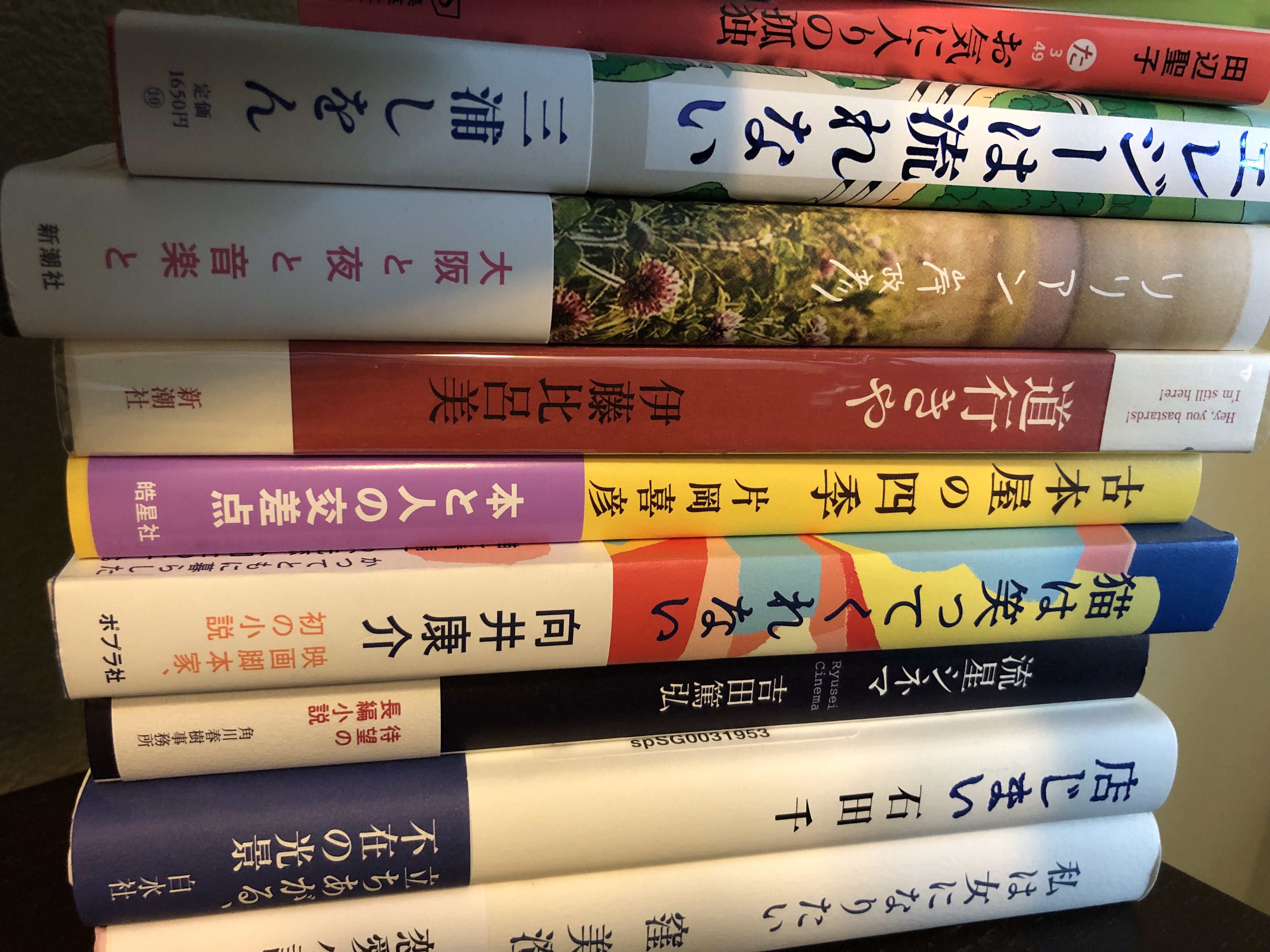森崎書店の日々 (2010)、続・森崎書店の日々 (2011)、八木沢 里志、小学館
Days at Morisaki Books and More Days at Morisaki Books, by Satoshi Yagisawa
[no English translation available]
Writing about comfort reads, author Sherwood Smith says, “I think it’s safe to say that everybody knows what is meant—the books we turn to for rereads, always knowing exactly what we’ll get. The anticipation of the expected comfort—the lack of surprise—is part of the appeal.”
Days at Morisaki Books and its companion volume, More Days at Morisaki Books, by Satoshi Yagisawa certainly fit this definition—Japanese comfort reading leavened with books and coffee. This is not what you would pick up for complex sentence structures or beautiful turns of phrase; it would likely fall into the “hot water bottle” category of book, like a hot cup of tea with a hit of lemon. But surely we all need books like that once in a while?
Our heroine, Takako, finds refuge in her uncle’s bookstore when her boyfriend tells her he is marrying someone else. Having quit her job, she spends her days idly sitting in her uncle’s shop, located in Jimbocho, the biggest secondhand book market in the world.

Picture of Jimbocho drawn by Bob Eckstein, from “True Tales and Lost Moments from Book Buyers, Booksellers, and Book Lovers”
Takako is bored at first and hates the smell of musty books, but is gradually intrigued by the eccentric customers. She has never been much of a reader, but living in Jimbocho, surrounded by bookstores and literally encircled by piles of books in her room above the bookstore, it seems almost inevitable that she will become an avid reader. One night, she picks up a book and just keeps going.
The novel starts like this:
I lived in Morisaki Books from the start of summer to early spring of the following year. I stayed in an empty room on the second floor, living almost buried by books. The room was cramped and didn’t get much sun, the musty smell of old books permeated everything and it was always damp. But to this day, I’ve never forgotten the days I spent there. This place was the start of my real life. If I hadn’t had this time here, my life would have been less vibrant, more monotonous and lonely.
Days at Morisaki Books focuses on Takako’s recovery from her first love affair, aided by a satisfying comeuppance for the philandering boyfriend, her discovery of books, and meandering conversations in a neighborhood coffee shop. By the second book, Takako has found her feet again, and this story focuses on her efforts to help her uncle and his ailing wife, support a troubled friend and build a relationship with a new boyfriend.
The film of this book has a scene that lasts about 10 minutes long in which Takako is simply reading and perusing the shelves of secondhand bookstores, sometimes with no music in the background, just the sound of pages being turned and the traffic outside (you can watch a trailer for the film here that gives you some idea of the overall mood of both the books and the film). The scene was strangely engrossing and calming, rather than boring, and in fact this stripped-down approach seems to reflect the two books’ philosophy—when you pare away all the noise, what matters most are friends and family, time to read, and time to think.
Takako, as played by Akiko Kikuchi in the film of the book
Uncle Satoru, played by Takashi Naito
If we want more people to read Japanese literature in translation, then a wider variety should be available, including books with storylines that would appeal even to people who don’t read the New Yorker or Granta. Perhaps this is the role that middlebrow literature—easily accessible but of solid quality—can play. The crime genre seems to be over-represented among Japanese novels in translation, and there are plenty of highbrow books too that someone has decided represent the best of Japanese literature. I enjoy all of these, but surely there is room for novels that satisfy a different need, novels that would entice both a 16 year-old girl and an 80 year-old man?

Chinese translation of the first book; almost 1,000 Japanese books were translated into Chinese in 2014 so the US has a lot of catching up to do.

And even the second book has been translated into Chinese.

Recent Comments